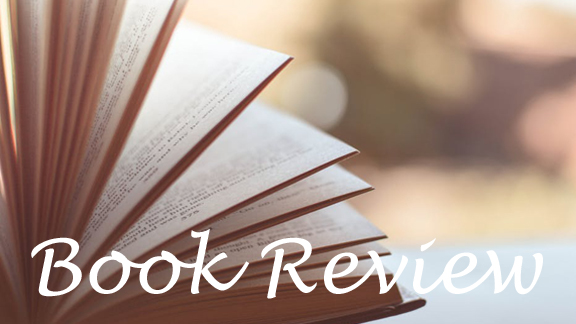Amber Smith’s debut novel, “The Way I Used to Be” (2016), was my book club’s selection for “Makes You Cry” month, and indeed, she delivers lump-in-your-throat writing. It’s expertly calibrated to achieve balances: a main character who is a horrible person and a good person, situations that are horrific but not hopeless, a deeply internal story with well-drawn external characters.
This young-adult novel starts with – this isn’t a spoiler because it happens on the first page — Edy being raped during Christmas break of her freshman year by her older brother’s best friend, Kevin. Then it becomes an exploration of Edy’s mental health through her high school years, with the battle fought internally.
Becoming … someone different
Although Edy’s brain problems are triggered by a physical attack, I think anyone on the struggle bus will relate to her. Since she’s 15, she hasn’t become who she is going to be yet, and the rape derails her. She ends up on a foreign track, purposely behaving antithetically to her nature. Smith writes Edy in the first person, but ingeniously uses “her” when referring to the pre-attack Edy.

“The Way I Used to Be” (2016)
Author: Amber Smith
Genre: Teen drama
Setting: Unnamed northern U.S. suburbia, 2010s
Note to readers: The Book Club Book Report series features books I’m reading for my book club, Brilliant Bookworms.
The new version tries out her full name, Eden, and actually does gain some confidence by switching from glasses to contacts, dressing fashionably and trying a new red hair color. Smith was born in 1982 so it’s possible that the dye-job parallel to Angela Chase of “My So-Called Life” (1994) is not coincidental.
Also coming to mind is Joey Potter’s arc in Season 1 of “Dawson’s Creek” (1998), when she can’t tell Dawson she loves him – a failure that makes her depressed and snappish. What Eden can’t verbalize is much more serious, of course.
Guys start to notice her, and she uses this new card in her deck to be promiscuous, which clashes with her inner nature. There’s drinking and drugs, too – oddly understated by Smith — but generally Eden is addicted to anger and self-loathing.
Internal strife
With mental-health stories like this, I always wonder if psychiatrists and counselors yell at the pages “Tell someone!” Counseling and pills are not mentioned once in “The Way I Used to Be.” I’m not saying they are a fix-all for everyone, but it is unfortunate for a modern-day story.
(Things like smartphones suggest it’s set around the time of its publication, although it is odd that Eden and other teens smoke cigarettes, which doesn’t seem like a Gen-Z thing to do. It makes me wonder if Smith is writing about a personal experience from the 1990s; if so, she’s keeping that to herself.)

Generally, I would say conversations with unfinished sentences – as we get during the first meetings between Eden and Josh, the guy she’ll develop feelings for (although she won’t admit it) – would be annoying. But Smith makes them sound natural.
All of the teen characters are immature in a believable way, with a nice cross-section represented. The Awkward Sensitive Guy comes in the form of Steve, a member of Eden’s lunch-break library book club. While the Nice Guys Finish Last trope does indeed play out, it’s nice to see that Eden is not proud of being mean to Steve.
If Smith wrote “The Way I Used to Be” in third-person style without access to Eden’s brain, Eden would come off as absolutely awful. But because she knows she’s behaving badly, we sympathize with her. (Although I don’t know why she calls her parents by their first names; that seems cold even for her – not to mention a teen-rebellion cliché.)
Sympathy for her characters
Smith has sympathy for all her characters as flawed human beings (Even Kevin develops slightly beyond a generic monster). In the most harrowing passage outside of chapter one, Eden is bullied by two older boys who run with Eden’s stereotype as the school “slut.” “I see something like remorse flicker in his eye, like a neurological twitch,” Smith writes from Eden’s POV. “I guess even a psychotic asshole can see I’m terrified.”
What I like most about “The Way I Used to Be” is that – although Eden is a victim – she doesn’t want to be a victim. She wants to be strong. The irony, of course, is that asking for help is the strong thing to do, and she’s unable to do that. We always understand why this simple thing is so hard – starting with Kevin’s threat to kill her, but developing into a nuanced tangle of excuses.
The author doesn’t seek to blame Eden’s brother Caelin, her parents, her best friend Mara or her boyfriend Josh for not drawing Eden’s triggering event out of her mouth. After all, they do try. But we can’t help but think, “Man, I wish one of them could somehow draw it out of her so she could begin to deal, and heal.” I don’t know if its purposeful by Smith, but the novel is a statement about the importance of keeping an eye on loved ones’ mental health.
I took a long time to read “The Way I Used to Be.” It’s so emotional that it’s hard to pick up. Yet it’s easy to catch the wave of Eden’s inner monolog each time, and then it becomes hard to put down. In the end, Smith’s debut novel will be hard to forget.

